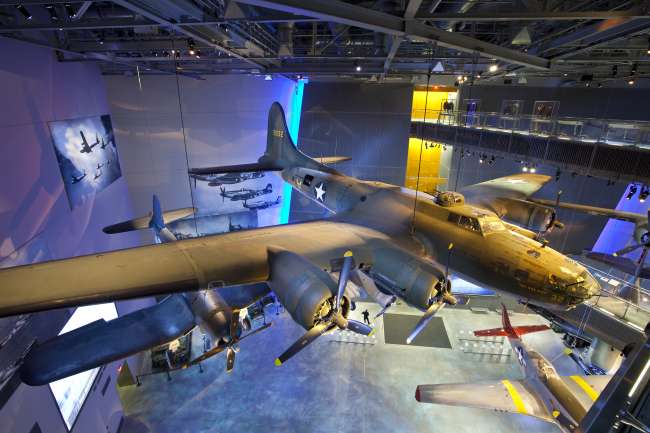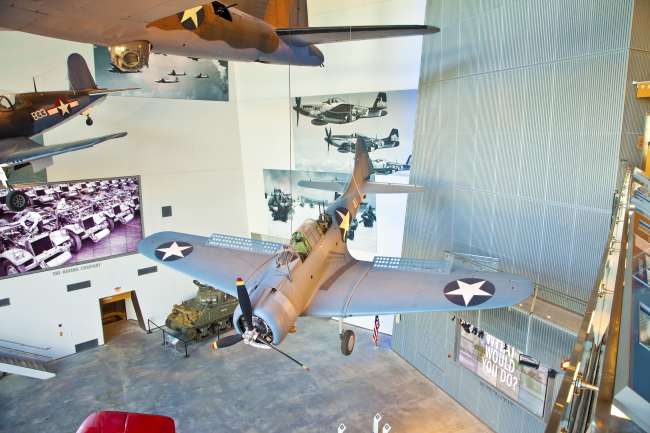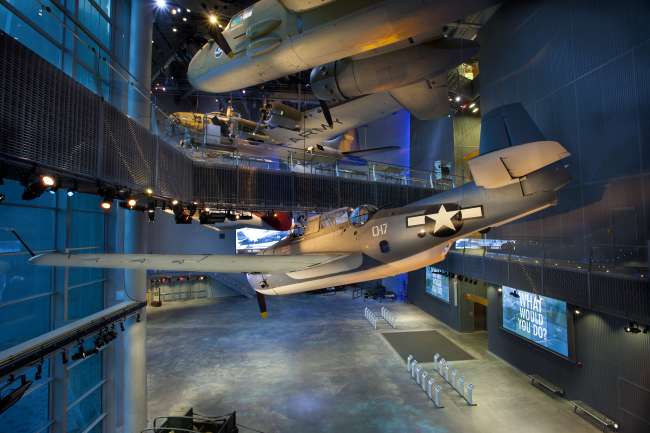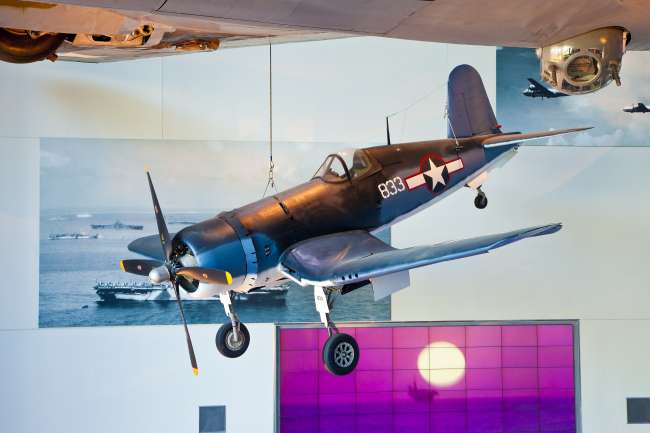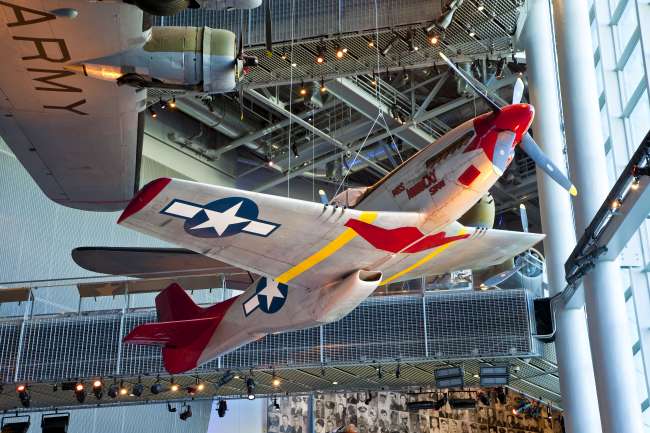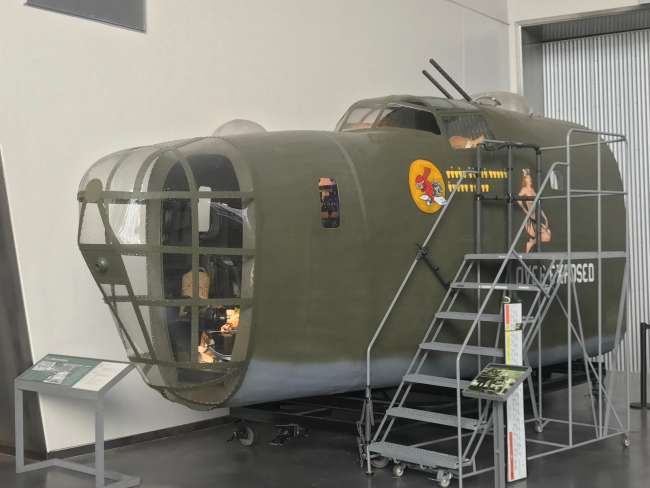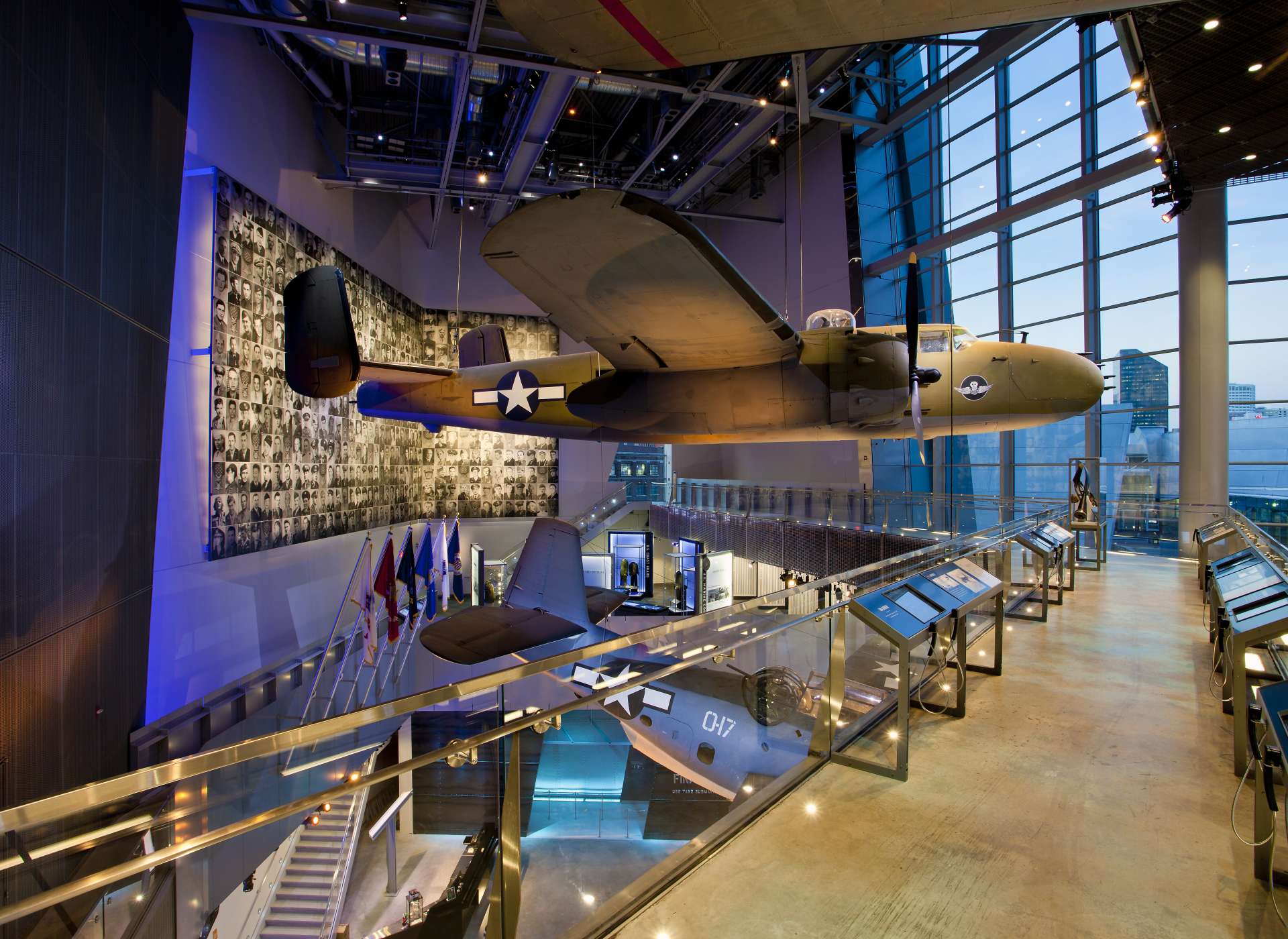
The B-25 bomber gained fame in the daring April 1942 Doolittle Raid. Lt. Col. James Doolittle humiliated the Japanese military by penetrating some of the world’s most formidable air defenses and dropping bombs a stone’s throw away from the Emperor’s Palace. The Doolittle Raid's B-25s were the only aircraft to bomb Tokyo until 1944, when B-29 Superfortresses began operating from the Mariana Islands. The B-25 bomber soldiered in every theater of war, excelling in multiple roles, chiefly as a ground-attack aircraft later in the war.
B-25J of the Burma Bridge Busters, 490th Bombardment Squadron
The 490th Bombardment Squadron was known as the "Burma Bridge Busters," specializing in the bombing of bridges that would deny Japanese supplies and reinforcements in Burma. This B-25J “gunship” is painted in the markings of one of the aircraft known to have been flown by the squadron. The aircraft could bring 14 forward-firing .50 caliber machine guns to bear on the Japanese anti-aircraft defenses that were so prevalent around the bridges of Burma before dropping 3,000 pounds of bombs on the bridge itself.
Statistics
Type: Medium Bomber
Production
Date Introduced: 1943
Manufacturer: North American Aviation
Number Produced: 4,300+
Specifications (B-25J)
Crew: 6 (Pilot, Co-Pilot, Bombardier/Navigator, Flight Engineer, Radio Operator and Tail Gunner)
Wingspan: 68 feet
Length: 53 feet
Maximum Speed: 272 miles per hour
Cruising Speed: 230 miles per hour
Maximum Range: 1,350 miles
Engines: Two Wright R-2600-92s (1,700 hp each)
Maximum Bomb Load: 3,200 pounds
Armament: Twelve to eighteen .50 caliber machine guns
Warbirds
-
Boeing B-17E Flying Fortress
Developed as a strategic bomber in the 1930s, the rugged B-17 was used in every theater in World War II, and became legendary for its ability to sustain heavy damage in battle while maintaining self-sufficient firepower.
-
Douglas SBD Dauntless
The US Navy’s primary dive-bomber at the war’s start, the Douglas SBD Dauntless earned its reputation—and helped earn victory—at the 1942 Battle of Midway, sinking four Japanese carriers.
-
General Motors TBM Avenger
Despite disappointing action at Midway, the Avenger served as the US Navy’s primary torpedo bomber, effectively interdicting enemy shipping and delivering ordnance on enemy positions throughout the Pacific.
-
Vought F4U Corsair
The F4U Corsair entered combat in 1943, and gave Allied naval aviators a winning edge against their opponents. Renowned for its speed, ruggedness, and firepower, the Corsair excelled as both a fighter and an attack aircraft in support of ground forces.
-
-
Consolidated B-24 Liberator
The B-24 Liberator was a powerful symbol of US industrial might, with more than 18,000 produced by the war’s end. Liberators flew faster, higher and farther than the older B-17, thanks to greater fuel capacity and an innovative low-drag wing design.
